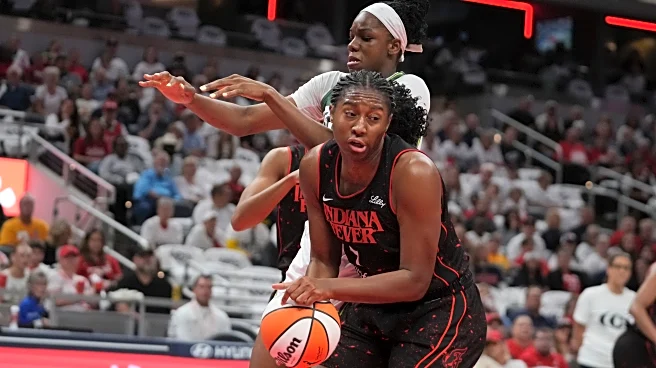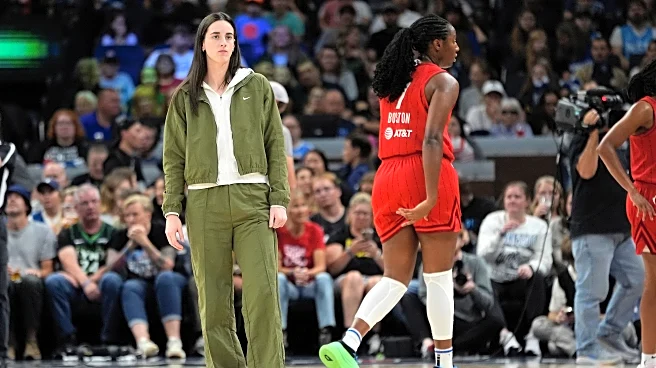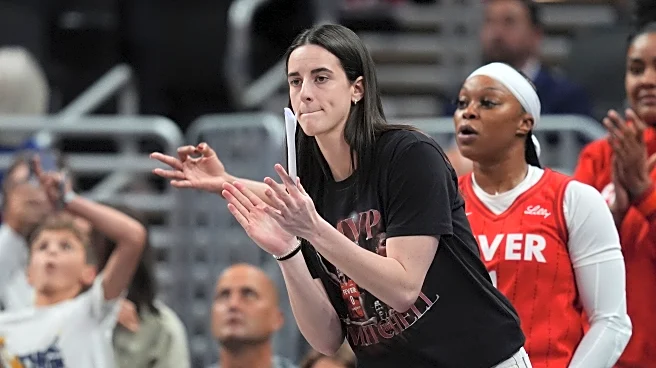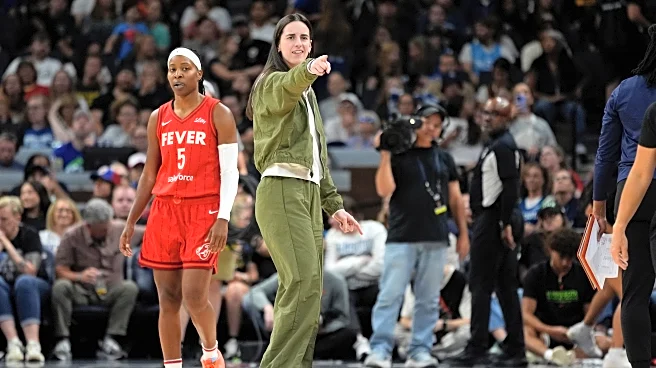What's Happening?
ESPN has identified Kelsey Mitchell as the Indiana Fever's best clutch player, surpassing Caitlin Clark, who is widely regarded as one of the most exciting players in women's basketball. Despite Clark's impressive skills, including her deep three-point shooting and court vision, she has yet to deliver a signature game-winning shot in her WNBA career. Mitchell, on the other hand, led the league in clutch scoring last season and continues to perform strongly this season. Her ability to score under pressure has been crucial for the Fever, especially during times of injury within the team.
Why It's Important?
The recognition of Kelsey Mitchell as the Fever's top clutch player highlights her significant contribution to the team and the league. This acknowledgment may influence team dynamics and strategies, particularly in late-game scenarios. It also underscores the depth of talent within the Fever, offering them multiple options for critical plays. For Caitlin Clark, this could serve as motivation to further develop her clutch performance, potentially enhancing her already impressive skill set. The broader impact on the WNBA includes increased attention to player performance metrics and clutch scoring abilities.
What's Next?
As the WNBA playoffs approach, the Fever will likely rely on both Mitchell and Clark for crucial plays. Clark's return to the court before the playoffs could provide her with opportunities to demonstrate her clutch capabilities. The team's strategy may evolve to leverage the strengths of both players, potentially leading to more dynamic and unpredictable game outcomes. Fans and analysts will be watching closely to see if Clark can add a game-winning shot to her repertoire, further solidifying her status as a top player.
Beyond the Headlines
The discussion around clutch players in the WNBA raises questions about the criteria used to evaluate player performance under pressure. It also highlights the importance of teamwork and the ability to adapt to different game situations. The Fever's situation exemplifies how having multiple players capable of delivering in clutch moments can be advantageous, providing flexibility and resilience in high-stakes games.













